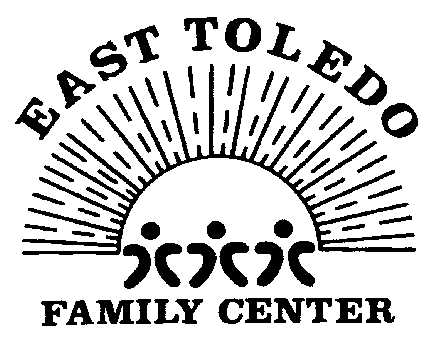1917-1946
Neighborhood House
in Good Times and Bad
The importance of the Neighborhood House to the community is apparent by the number of companies and individuals who contributed to its support. A list from the 1917 records 100s of donors, including the names of Toledo’s most prominent citizens. Here can be found the names of Ernest Tiedtke, Thomas DeVilbiss, Edward Ford, General Sherwood, Mr. Walbridge, Mr. Detwiler, and Mr. LaSalle, along with such East Side names as Winchester, Hoeflinger, Eggleston, Gardner, and Tucker. Edward Drummond Libbey was also an early benefactor.
Immigrants continued to flood into America during the years immediately following World War I. Rev. Hoover and Mark Winchester led the efforts of the Americanization Movement to help these new arrivals adjust to life in this country. As the need increased, the Neighborhood House continued to grow. By 1927, there were three buildings on the Vinal Street property. The original Neighborhood House was more than doubled in size with the addition of a large auditorium, classroom, and refectory. There was also a Neighborhood Residence house for the Hoover family and a neighborhood Cottage behind it for the caretaker to live in. The playground also continued to be enlarged, with the help of some “Jewish friends” who contributed equipment and financial support.
Over the years, musical bands were a feature of the Neighborhood House, usually with a large drum as the focal point. Mayor William Jackson, and East Side boy, also supported the Neighborhood House and was a friend of Rev. Hoover. But as the 1930s began, the Great Depression was beginning to take its toll on the working-class families of East Toledo. Also at this time, the Neighborhood House lost its founder when Rev. Hoover passed away in early 1932. But in these difficult times, the ministry of the Neighborhood House was needed all the more, and many were there to provide help to those in need.
A 1930 article by Isabel Toppin of the East Side Sun family records that “now many are losing the houses they tried too hard to maintain.” She writes that the “streams of little wagons and push carts headed for the city’s dole measures the depression into which we have fallen.” But, she continues, “In the midst of the general unhappiness, the Neighborhood House has striven to relieve the drab hopelessness of the situation.” In these hard times, the Neighborhood House was often a last resort for people. And that’s when it became more important than ever. People would come to borrow a chair for a funeral. They would borrow a table for a wedding or the large coffee pot for a family party. Volunteers would bring in clothing, a baker would send in surplus stock. “Mothers,” it was recorded, “accomplished wonders with a yard of goods and a button.” The Neighborhood House became a clearing house for the needs of the community. And the human spirit would not be extinguished by the hard times.
And by the 1940s, as the economic times began to improve, the Neighborhood House continued to provide a place for people of all ages in the community to grow and become better citizens and better Americans.
